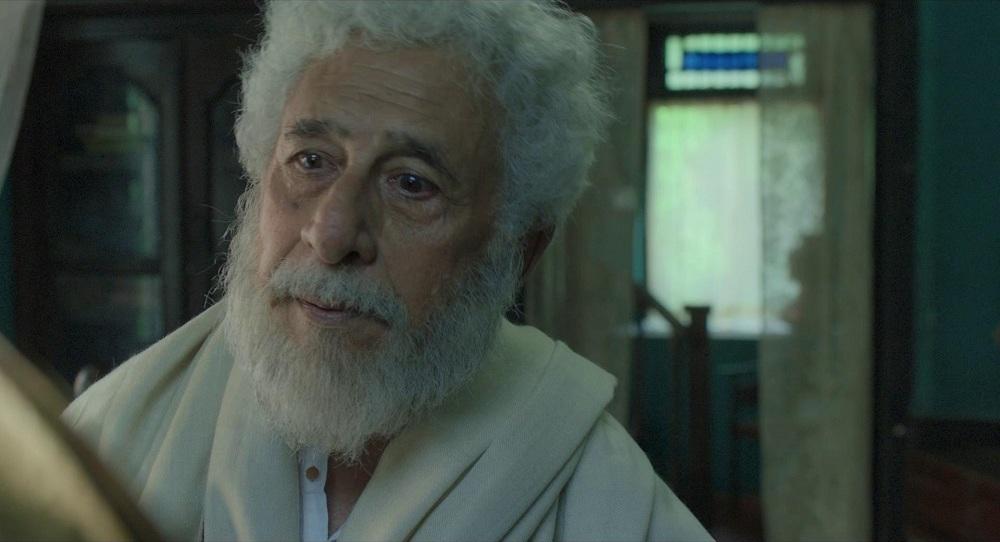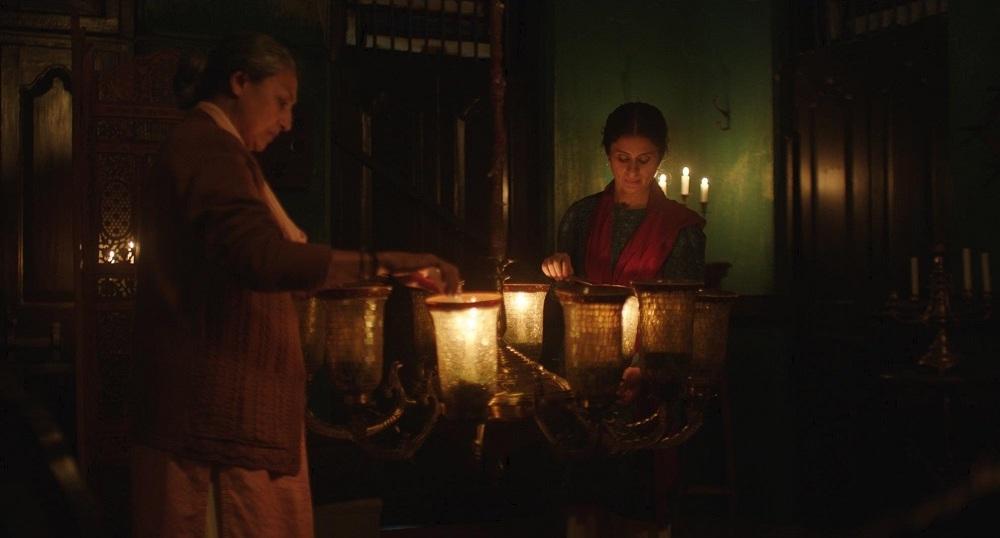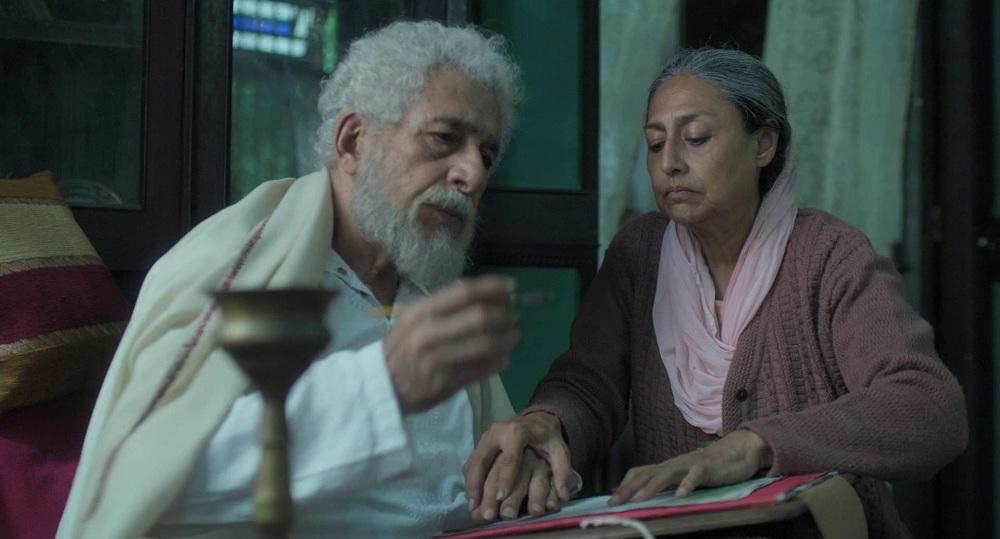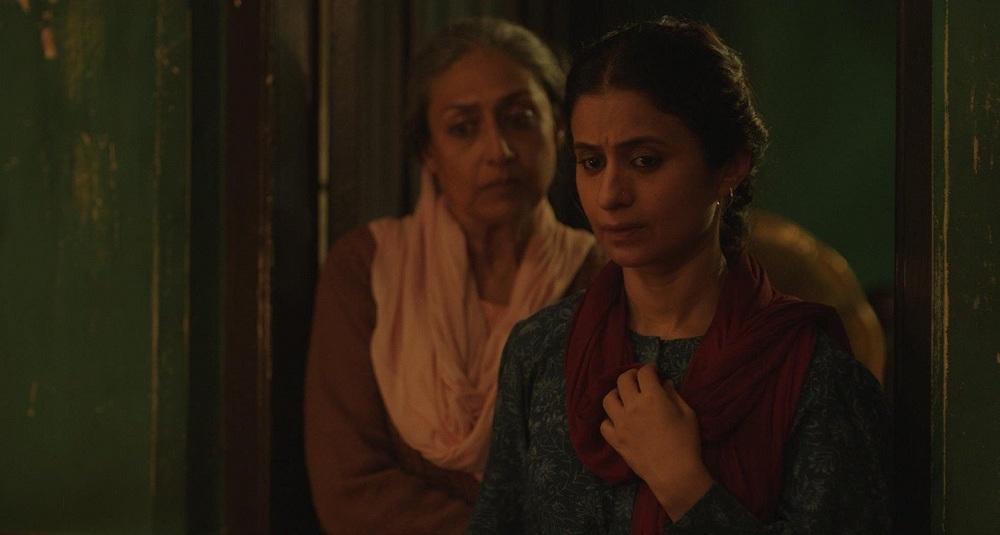The Loss of Hindustan: The Miniaturist of Junagadh by Kaushal Oza
Kaushal Oza’s short film The Miniaturist of Junagadh (2021) is an adaptation of Stefan Zweig’s story The Invisible Collection, in which a Berlin-based art dealer for an antiques firm meets an old client—a collector who has declined into poverty and blindness after the economic ravaging of Germany in the First World War. A familiar theme of Zweig’s—the splendour of an old Europe, lost in the traumatic upheavals of the Great War—is transferred to a different cultural context in Oza’s film: the lost world of Hindustan, soon to be replaced by the new Indian state that was founded after the Partition in 1947.
The figure of the old collector is changed to that of an ageing, blind miniaturist—a musawwir, embodied by the dramatic presence of Naseeruddin Shah. His character, Husyn Naqqash, is a former painter at the court of the Nawab of Junagadh. Once the Nawab decides to leave for Pakistan, the other new nation state founded that year, Naqqash’s family falls into poverty and is forced to leave their mouldering, but still rather stately haveli in Junagadh. Before leaving the property, they decide to sell the house and its contents to Kishorilal, a skeptical citizen of the new country, testing out its discourses of hatred and exclusion. Against this background, an intimate chamber piece is constructed by Oza and his cinematographer Kumar Saurabh.
Naqqash’s daughter and wife perform an elaborate fiction to support the pride that the former painter takes in his work. He believes that he still owns several of his own miniatures, but the women have to inform Kishorilal—who is tempted by the value of those miniatures and insistent on owning them—that the paintings have been sold to keep them going over the last few months of violence and uncertainty. Kishorilal is convinced to participate in this fiction, keeping the old painter’s illusions intact, as Naqqash hopes to return to Junagadh one day “…when the political games being played between Jinnah and (Sardar) Patel are concluded” and buy the house back. It is clear that in his hope for return lies the hope for the return of this old world too, lost irretrievably in the search for a modern nation.
Naqqash’s blindness is also a source of pride for him. It is a reminder of his life’s dedication to the art of miniature painting. Close observation of the intricate details that the art employs has ruined his eyes over the years. It is a blindness that was much sought after, and is well-earned in the end. The world of the miniature—an art form that is usually associated with pre-modern traditions of painting—also encloses the complex interwoven world of beauty and melancholy that the old world of Hindustan possessed for a man like Naqqash. This world is detailed closely by the production design that suffuses the mise-en-scène with Hindustani classical music, a gold-plated gramophone, delicate sea-shell place holders, the wooden box of a miniaturist’s brushes and implements, smoke from hookahs and mirrors that confound our sense of the interior space. Smoke, mirrors and tricks of the light are deliberately engaged to hide the secret of their decline and the women’s shameful story of desperation turned to deceit. The film’s reliance on identifying this old world with the distinct, almost stereotypical, symbols of upper-class Muslim high culture pay off in the climax, where the miniaturist’s art is revealed to be a cosmopolitan form—capable of absorbing the influences of a different culture and changing with it synthetically, instead of suggesting a static form that represents a static world of fantasy.
Perhaps the most moving scene of the film is the one where Naqqash describes the tableaux of his miniature works. He passionately remembers—and points out—every trace of detail that evokes the smell, sight and physical presence of a Mughal world that he sees in his mind; but which is visible to us, the audience and Kishorilal, as blank sheets of framed paper. The desperate illusion of a past that has slipped out of the grip of time, the force of a lament transforming into a “prayer of hope,” as the director puts it, lies at the heart of the narrative. Oza’s invocation of this world that conceals the desire for another one is convincing and intimate. In Zweig’s story, the women take care not to tell the old man about how bad the state of affairs are in the country since the war, but there is no such respite for the Miniaturist of Junagadh. He knows about the political crisis that has brought violence and insecurity in the new country. It is his simple faith in a world that gave birth to his art of miniatures that protects him in the end, as he leaves the country.
Even if the narrative holds few surprises for an audience attuned to the melancholic frame of the story, its power to last in the mind is sealed by Shah’s performance of fragility and pride, so that his state of ignorant bliss and belief in a different world is the secret, enviable commodity that the film reveals to be its most precious asset.
The Miniaturist of Junagadh is screening online till the 14th of November 2021 as part of the Dharamshala International Film Festival.
All images from the film The Miniaturist of Junagadh by Kaushal Oza. 2021. Images courtesy of the director.








